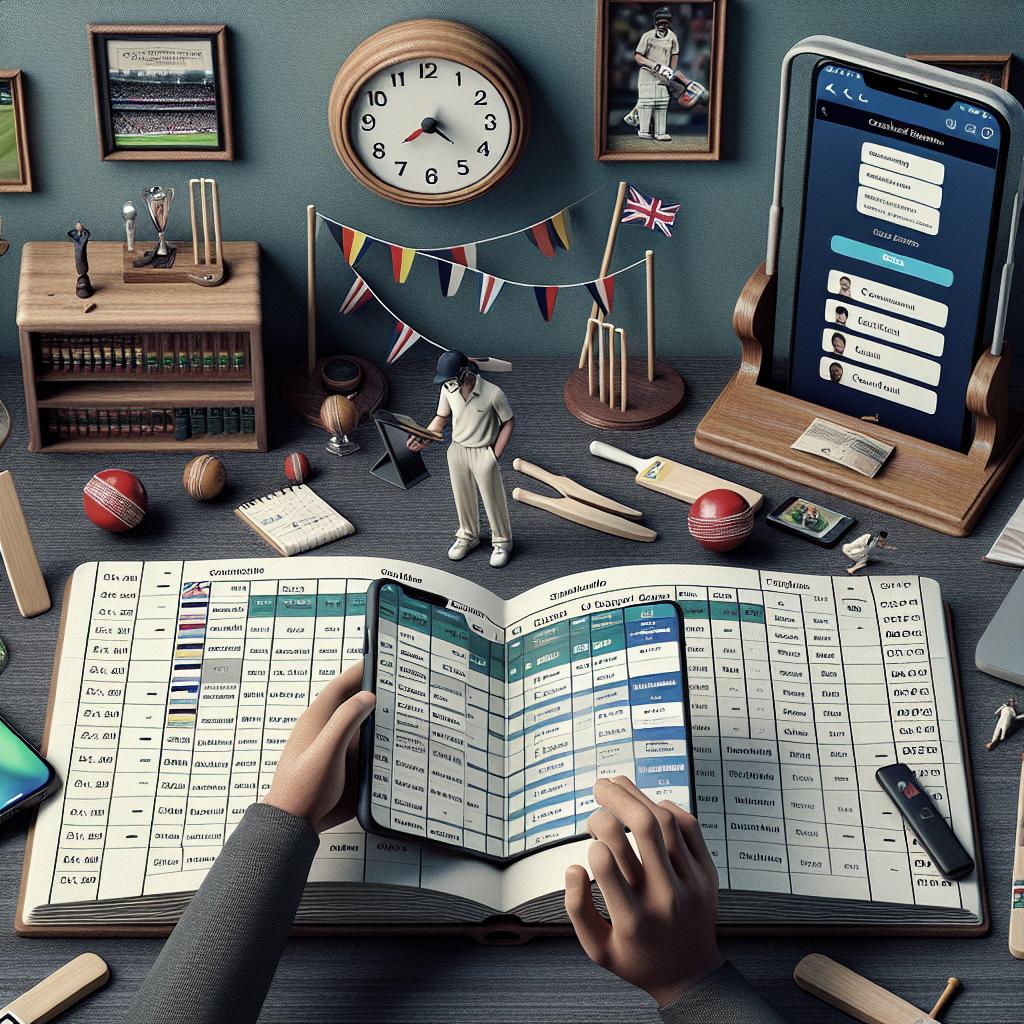< lang="en">
Cricket wicketkeeping is an incredibly demanding role that requires a mix of agility, sharp reflexes, and tactical acumen. In this blog post, we will walk you through various aspects of training as a wicketkeeper. From the fundamental techniques to advanced skills, fitness routines, and mental resilience, you’ll gain insights into what it takes to excel in this position. Whether you are a budding cricketer looking to specialize in wicketkeeping or a coach seeking actionable tips, this comprehensive guide will be your go-to resource.
Understanding the Role of a Wicketkeeper
The wicketkeeper is a core component of any cricket team, playing both defensive and offensive roles on the field. Defensively, the primary responsibility involves catching balls that the batsman misses and executing stumping opportunities. Offensively, wicketkeepers must work closely with the bowlers to set up strategic plays and out-think the opposition.
Understanding the nuances of this role can significantly contribute to better performance. Beyond the obvious physical demands, the wicketkeeper acts as a key communicator and strategist. They need to possess a deep understanding of game dynamics, the abilities of their teammates, and the tendencies of their opponents.
Primary Skills Required
The foundational skills for a wicketkeeper include quick reflexes, hand-eye coordination, and excellent catching abilities. Without these, even the most well-planned tactics can fall apart. Reflex training can be achieved through various drills such as catching tennis balls against a wall or using specialized reflex balls designed for cricketers.
Stance and positioning are equally critical. The wicketkeeper’s stance needs to allow for maximum mobility while providing a stable base for quick actions. Practicing movement drills that simulate match situations will help you develop the muscle memory required for high-pressure scenarios.
Fitness and Conditioning
Physical fitness is non-negotiable for a wicketkeeper. Unlike many other positions, wicketkeeping involves near-constant low to medium intensity physical activity, interspersed with bursts of high-intensity effort. Core strength, flexibility, and overall cardiovascular health are crucial.
Engage in a fitness routine that includes cardiovascular exercises such as running or cycling, strength training focusing on core muscles, and flexibility exercises like yoga. These workouts will improve your endurance, helping you maintain peak performance throughout the match.
Equipment and Gear
Choosing the right equipment can make a significant difference in your performance. From gloves to pads to helmets, every piece of gear needs to be tailored to fit you perfectly. Ill-fitting equipment can hamper your mobility and compromise your effectiveness on the field.
Spend time understanding and selecting equipment that provides a balance of protection and agility. Regular maintenance of your gear is also vital to ensure it remains in optimal condition, providing consistent performance in both practice and match scenarios.
Advanced Techniques
Once you’ve mastered the basics, it’s essential to move on to advanced techniques. Advanced drills might involve rapid stumping exercises, multi-angle catching practices, and building a keen understanding of bowlers’ subtleties. Working on these skills can give you a noticeable edge over your competition.
Video analysis can be particularly useful for advanced training. Recording your practice sessions and reviewing them allows you to identify areas that need improvement, refine your techniques, and learn from your mistakes.
Mental Preparedness
Mental toughness is just as crucial as physical ability. The psychological demands on a wicketkeeper can be immense, given the high concentration levels required and the need to react instantaneously. Engage in mental conditioning practices such as visualization and mindfulness to enhance your focus and composure.
Being able to stay calm under pressure and having the mental fortitude to bounce back from mistakes is essential. Positive affirmations and mental imagery can help in building a resilient mindset, essential for long-term success in this demanding role.
Training Regimen
A well-structured training regimen is indispensable for aspiring wicketkeepers. The regimen should include a mix of skill-based training, fitness routines, mental conditioning, and rest periods. Plan your weekly schedule to cover each aspect adequately without overtraining.
Include specific drills focused on different skill sets like catching, diving, and stumping. Alternate high-intensity training days with lower-intensity recovery days to allow your body time to recuperate and build strength.
Team Coordination
As a wicketkeeper, you play a pivotal role in the fielding team’s coordination. Regular communication with bowlers, fielders, and even the captain is vital. Developing an understanding of each bowler’s style and preferences will help you position yourself optimally and preempt the batsman’s moves.
Engage in team drills that emphasize communication and coordination. These sessions will help build trust and a mutual understanding, making the team more cohesive and effective.
Analyzing Performance
Consistent performance analysis is key to continual improvement. Record your matches and practice sessions, and review the footage to identify both strengths and areas requiring improvement. Pay close attention to your posture, movement speed, and reaction times.
Engage in discussions with coaches and mentors to get feedback on your performance. Continually refine your techniques based on this feedback, and set specific goals for improvement in subsequent sessions.
Nurturing a Growth Mindset
Adopting a growth mindset can make a significant difference in your development as a wicketkeeper. Understand that setbacks are part of the journey and use them as learning experiences. Stay curious and always seek knowledge from various sources — be it books, videos, or other athletes.
By focusing on continuous improvement and remaining adaptable, you’ll find yourself progressively getting better, paving the way for a successful career in cricket wicketkeeping.
Next Steps
| Aspect | Details |
|---|---|
| Understanding the Role | Getting a deep understanding of your responsibilities and influencing the game strategy. |
| Primary Skills | Improving reflexes, hand-eye coordination, and correct positioning. |
| Fitness and Conditioning | Engaging in cardiovascular, strength, and flexibility training. |
| Equipment and Gear | Choosing fitting gear for optimal performance and maintaining it. |
| Advanced Techniques | Practicing advanced drills and employing video analysis. |
| Mental Preparedness | Engaging in visualization, mindfulness, and building mental resilience. |
| Training Regimen | Creating a balanced training schedule incorporating various skill sets. |
| Team Coordination | Ensuring effective communication and understanding with the team. |
| Analyzing Performance | Reviewing footage and seeking feedback for continuous improvement. |
| Growth Mindset | Embracing challenges and focusing on continual learning. |


